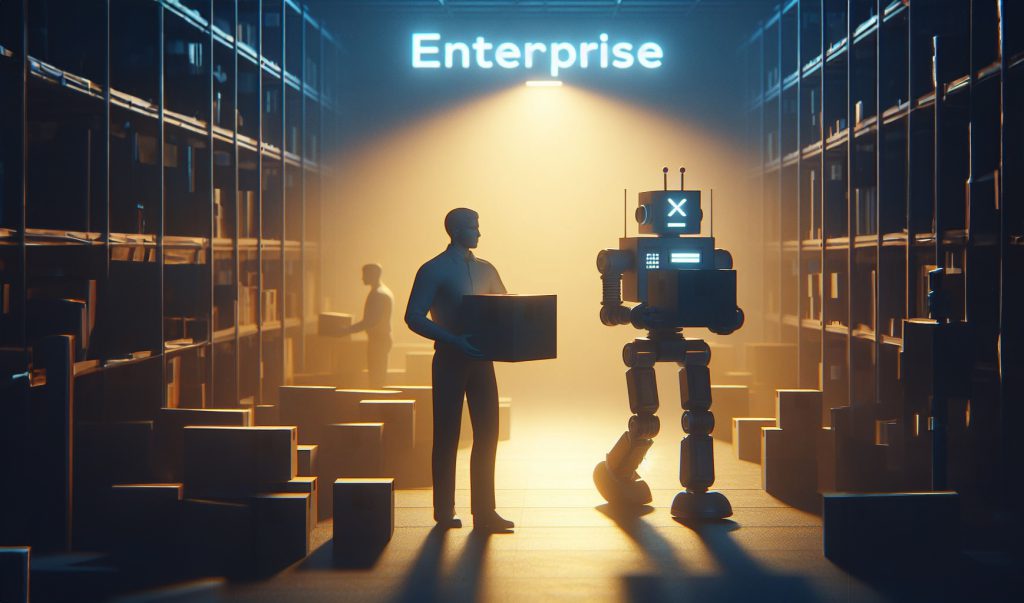Howdy AI friends,
Welcome back to our second issue of AI à la Carte. This time, I am diving deeper into AI, where data is the secret ingredient, code is the chef’s knife, and automation is the sous-chef. I’ll explore how to find the perfect balance between these elements to whip up AI solutions that are both delicious and nutritious.
But let’s face it, even the best-laid plans can go awry. So, I’ll also share some tips on how to improvise and troubleshoot your AI projects because, let’s be honest, sometimes the kitchen catches fire!
For the grand finale, I’ll serve a side order of AI monitoring and AIOps.
So, grab your aprons, and let’s get cooking!
Balancing Data and Code with ML Automation
Like a perfectly balanced dish, a successful AI project relies on a delicate blend of ingredients. Throw in too much salt (data) or forget the essential spices (algorithms), and your creation will be a recipe for disaster.
Here’s where the magic happens: imagine a chef with a discerning palate, meticulously measuring spices, tasting, and adjusting the flavor profile. This mirrors the work of an AI architect who fine-tunes algorithms, tweaks parameters and iterates over models in a never-ending quest for perfection. Both require a keen sense of balance and precision. It’s not about throwing random ingredients into a pot or lines of code into a script; it’s about achieving harmony and getting the mix right.

Now, let’s translate this culinary choreography into the bustling Biz-Tech kitchen. We, your motley crew of data wranglers and code whisperers (Systems Architects, Business Analysts, Data Engineers, Data Scientists, and DevOps Engineers), come together to craft a solution that’s more than the sum of its parts. We carefully orchestrate the ETL pipeline, engineer features, train and fine-tune models, and then ensure they stay sharp through continuous monitoring and retraining with CI/CD (Continuous Integration / Continuous Deployment) pipelines as outlined in this article from the CROZ blog.
This delicate dance of data, algorithms, and expertise is the secret sauce behind a successful AI project. Want to learn more about the current state of CI/CD pipelines in ML? This blog from netune.ai compares four different ways to implement CI/CD concepts using traditional engineering tools and solutions from hyperscalers such as Azure and AWS.
Improvisation and Troubleshooting
Even in the best kitchens, things go wrong. Ingredients can run out, equipment can fail, and unexpected disasters can strike. Chefs must think on their feet, improvising solutions to salvage their dishes. Similarly, AI projects are fraught with unforeseen challenges: data anomalies, integration issues, and shifting project requirements.
The most challenging issue is the need for quick, creative problem-solving under pressure. In the tech world, an AI architect might need to pivot to a new approach or debug a stubborn issue on the fly. Both require ingenuity and the ability to troubleshoot effectively under pressure.
The careful balance between the training and inference environments is at the heart of this process— my colleague Miroslav Cerkez wrote a wonderful piece on this topic. The training environment provides a secure space for experimentation, ensuring comprehensive testing without compromising operational efficiency. However, the inference environment prioritizes speed and efficiency, delivering outputs promptly for client use. As someone deeply involved in data science and passionate about culinary creativity, I lean towards the training environment. However, I fully acknowledge the strategic importance of the inference environment, which is crucial for delivering robust solutions to our customers.
I find this Nvidia blog offers a good summary and insightful graphical representation of the two environments for a project deploying a deep-learning technology for image classification.
The Art of Serving
Presentation is everything in a Michelin-starred restaurant. A dish must not only taste exquisite but also look impeccable. Chefs take great care in plating, ensuring every detail is perfect before it leaves the kitchen. Similarly, the AI architect must present AI solutions that are user-friendly and impactful.

Think of a chef adding the final touches to a dish, ensuring it’s Instagram-worthy. An AI architect does the same by refining the user interface, providing the outputs are clear, actionable, and visually appealing. Both are artists who transform raw materials into something that delights and impresses their audience.
In AI engineering, serving a solution to the client involves seamlessly integrating MLOps and AIOps. At CROZ, we have a rich tradition of developing monitoring systems and maintaining a cookbook that has been continuously updated for the past 20 years. For AI projects, enhancing our existing monitoring systems to encompass new functionalities is crucial. This includes capturing the development and training phases of AI models, managing data ingestion and processing for AI tasks, and visualizing data in the system’s GUI.
If you want to read more about all the Ops for an AI project and how they fit together, I recommend reading this article from IBM developer platform.
And that’s a wrap for this issue! I hope you enjoyed this culinary journey through the world of AI. Next time, I’ll serve up a hearty portion of AI platforms with Kubernetes, DevOps, and GitOps. I’ll explore how to build a robust infrastructure for your AI creations, ensuring they’re scalable and reliable. Stay tuned!
Falls Sie Fragen haben, sind wir nur einen Klick entfernt.



